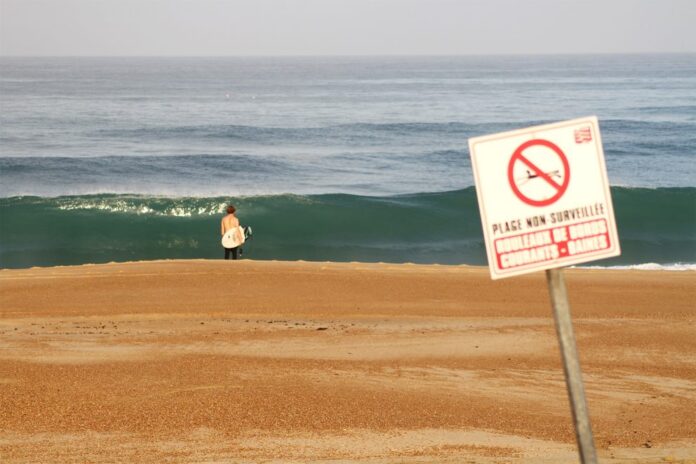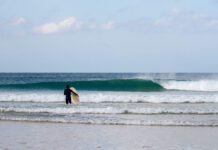Unless taking on waves of the likes of Nazaré, drowning is not something many surfers tend to give thought to. Yet drowning remains a major cause of non-intentional deaths from injury worldwide, which means that the risk is always there, and that prevention is of the essence. In a previous article, Surf Simply looked at an Israeli case study on the ability of lifeguards to anticipate surf hazard instigators, particularly rip currents, which are the leading causes of ocean drownings across the world. And whilst predictive models using the occurrence and speed of rip currents’ flow have been implemented in the USA, Mexico, Great Britain, and India, none had paid heed to metocean conditions.
Gironde, a 126-km-long stretch of sandy beaches in southwestern France, was the site chosen for a pioneering study that focused on developing a model to predict the risk of drowning based on wave and weather forecasts. The region is home to renowned surf spots like Lacanau and the Le Truc Vert stretch – but is notorious for its rip currents. This, together with the fact that most beaches in Gironde are only patrolled in July and August, also makes this section of coastline particularly susceptible to drowning events (between 2011 and 2016, 576 people required rescue, and there were 24 drowning fatalities). And when considering the length of the coastline, these numbers amount to an annual mean of 3.3 deaths per 100km – equivalent to the highest recorded in the United States.
“The number of people exposed to a rip hazard is directly related to the number of swimmers and other water users, and therefore linked to beach attendance. Attendance rises on holidays, weekends, and with increased air temperature and less cloud cover; the number of bathers reflects air and water temperatures and (possibly) wind speed,” write the researchers. With these potential predictors in mind, they looked at rescues and drowning reports from the Medical Emergency Center of Gironde, recording the time of the year and the day of the week when the event occurred, as well as the weather and metocean conditions (including wave height, period and direction) on that particular day.





